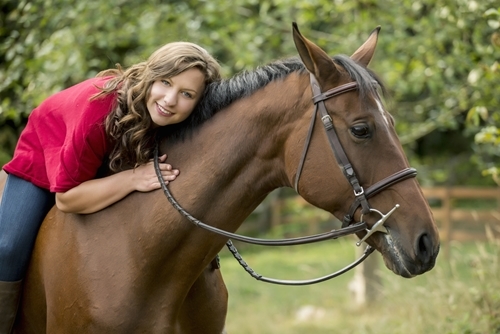A reward is always an effective source of motivation to accomplish goals or chores, and horses are certainly no exception to this strategy. But while every trainer has his or her own preferred methods for treating a horse after a successful day of practice, there are definitely ways to reward your animal that may be more beneficial than others. If every accomplished task is compensated with a delicious treat, you’ll set the standards pretty high for future training sessions, especially if you run out of snacks. Any horse owner looking for a few tips about effectively rewarding a horse should take a look at these strategies for recognizing good behavior:
Petting goes a long way
Affection doesn’t get any easier to display than simply providing your horse with a nice rubdown after a hard day’s work. Petting the neck of a horse when showing signs of good behavior is the most personal way to rewarding your horse, and you can rest assured the animal will identify the showcase of attention as a sign you’re satisfied with its performance. Petting can also be an effective tool during any training processes, especially when practicing various movements. A scratch behind the ears while the animal is walking in reverse will let it know it’s doing a good job, and if it stops, so does the petting. This type of affection is a great example of positive stimuli that will cost you less than a bundle of apples.
Vocal encouragement
Horses are quick to pick up on a trainer’s emotions, and an easy way to display a pleased attitude is by expressing satisfaction vocally. A happy and boastful “good job” every time your horse does something right will quickly let it know that you’re delighted with it, and a combination of petting and compliments also goes a long way. In contrast, you should vocally express displeasure when a horse isn’t doing the commands you’ve issued. This doesn’t mean yelling or acting angry, but it should involve concerned facial expressions and stern shaking of your head to get the point across. Once a horse corrects the action, give it a smile and repeat your satisfaction with an uplifting tone to your voice.
Lighten your load
When you’re riding a horse, shifting your weight or easing up on pressure is one of the easier ways to convey a message of satisfaction on your end. If your horse has correctly performed a particular turn or movement, let go of the inside rein a bit to free up some space for your horse to move its neck. As you release pressure, give the horse a little pet or rub along its neckline so it recognizes that the newfound freedom was intentional. A good rule of thumb to consider is a pressure/release strategy that can be practiced whenever you’re attempting a new move or trick. When demanding a task, applying a little pressure can be helpful to let the horse know it needs to accomplish the goal. Once the horse has successfully pulled off the feat, releasing and easing off the pressure can make it understand it did a good job.
Give your horse freedom
You’re alongside your horse all day, so you know what types of activities the animal loves to perform the most. Whenever your horse successfully learns a new trick or movement, allow it to try one of its favorite skills to show off. Horses tend to enjoy showing off skills they’ve mastered, and giving them a chance to boast can boost self esteem as well. Transitioning into a jovial trot after successfully pulling off a maneuver can almost serve as a victory lap, as you lay off its reins and rub its neck at the same time.
Treats for tricks
Of course, nothing says thank you quite like a refreshing snack whenever a horse gets its job done. Carrots and apples tend to be the healthiest snack options when it comes to rewarding your horse, and these classic treats are always well-accepted. Just be sure to avoid going overboard by giving your horse a treat for every sign of good behavior.









